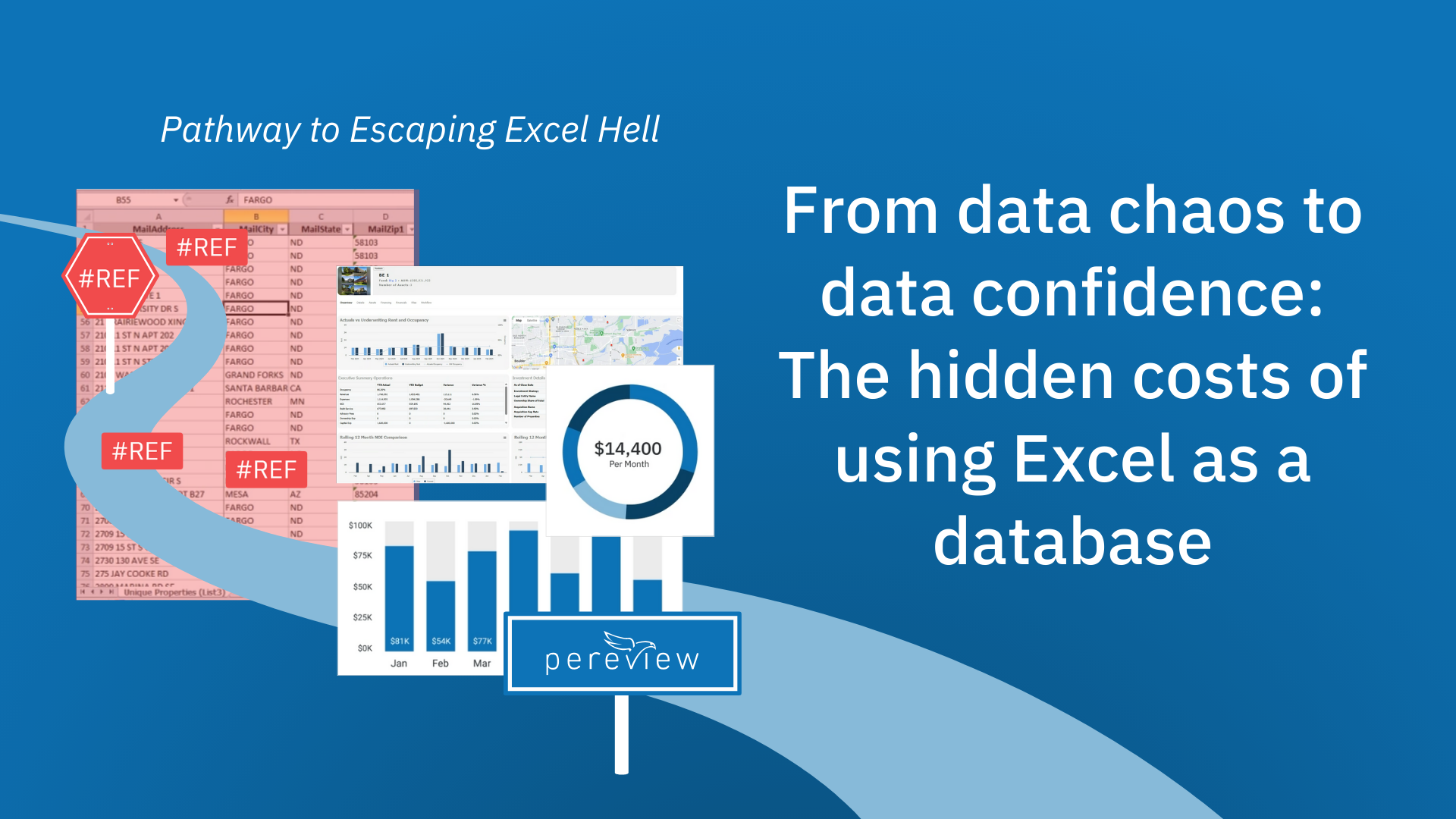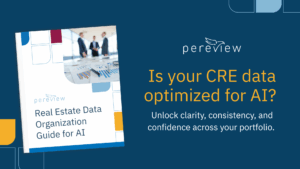Previously, we’ve discussed how Excel, while an incredible modeling tool, becomes a liability when used as a database. We’ve seen the risks of disconnected spreadsheets, wasted time, and costly errors, and we’ve also explored how Pereview helps bridge the gap between Excel’s flexibility and a structured, centralized data system.
Now, let’s take a closer look at the true costs of using Excel as a database – not just in terms of frustration and inefficiency, but in real dollars, lost opportunities, and operational risk. And most importantly, we’ll show you how firms are making the shift to a single source of truth to eliminate these costs entirely.
The hidden costs of Excel as a database
Many firms don’t set out to build their reporting processes around Excel, but in the absence of a centralized data platform, that’s exactly what happens.
At first, it works – spreadsheets store underwriting data, cash flows, and debt metrics. But over time, this system grows into an unmanageable web of linked spreadsheets, scattered across SharePoint, email chains, and company drives.
Then, it happens. One misplaced file, one broken formula, and suddenly, #REF! errors grind the entire reporting process to a halt.
As our client RCLCO said, “Our LPs had questions, but we did not always have the answers. We knew where all the data was, but we could not get to it and respond timely and accurately without a series of constant fire drills. Pereview will prevent that from happening.”
Beyond frustration, the real costs of this approach add up fast:
- Hours wasted on data management: Every reporting cycle requires digging through spreadsheets, fixing formulas, and chasing down files instead of focusing on investment strategy.
- Increased risk of costly errors: A single outdated formula or incorrect entry can skew financial models, misinforming decisions and impacting investor confidence.
- Security and compliance risks: Spreadsheets stored across multiple drives and email threads create data security vulnerabilities and make audits and compliance a challenge.
- Siloed data hurts decision-making: Without a centralized source of truth, teams often work off inconsistent, incomplete, or inaccurate data, leading to poor investment decisions.
At this point, firms aren’t just losing time – they’re losing money.
So, what’s the next step? Moving from disconnected spreadsheets to a single source of truth.
From chaos to clarity: Why a single source of truth matters
A modern real estate asset management platform ensures that all your financial, operational, and portfolio data lives in one secure, centralized platform – eliminating the inefficiencies, risks, and frustrations of Excel Hell.
Instead of spending hours validating data, reconciling reports, and fixing errors, firms can generate insights instantly, make faster decisions, and confidently scale their portfolios.
That’s where Pereview comes in. Here’s a short video from our CEO Jeff Wilson as he explains how he realized the limitations of Excel were affecting the productivity of Goldman Sachs Archon Group’s asset managers and became the catalyst for the Pereview asset management platform.

Ready to modernize your commercial real estate asset management process and escape Excel Hell?
The firms that succeed in today’s real estate market are the ones that treat data as a strategic asset – not a reporting burden. With Pereview, you don’t have to choose between Excel and structure. You can have both.
In our next post, we’ll dive into the tangible ROI of transitioning to a real estate asset management platform, and how firms are saving hours – even days – on reporting, reducing errors, and shifting their focus from spreadsheet wrangling to high-value investment strategy.
Ready to learn more about how Pereview can help you take control of your data without giving up your Excel models? Schedule a demo today.



